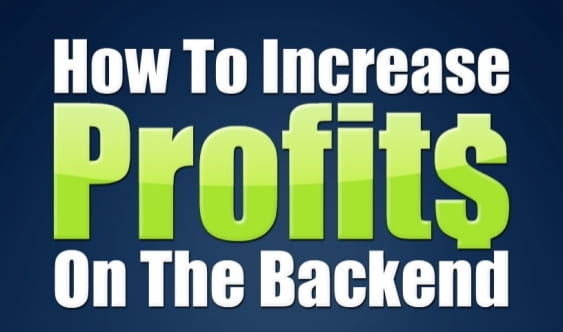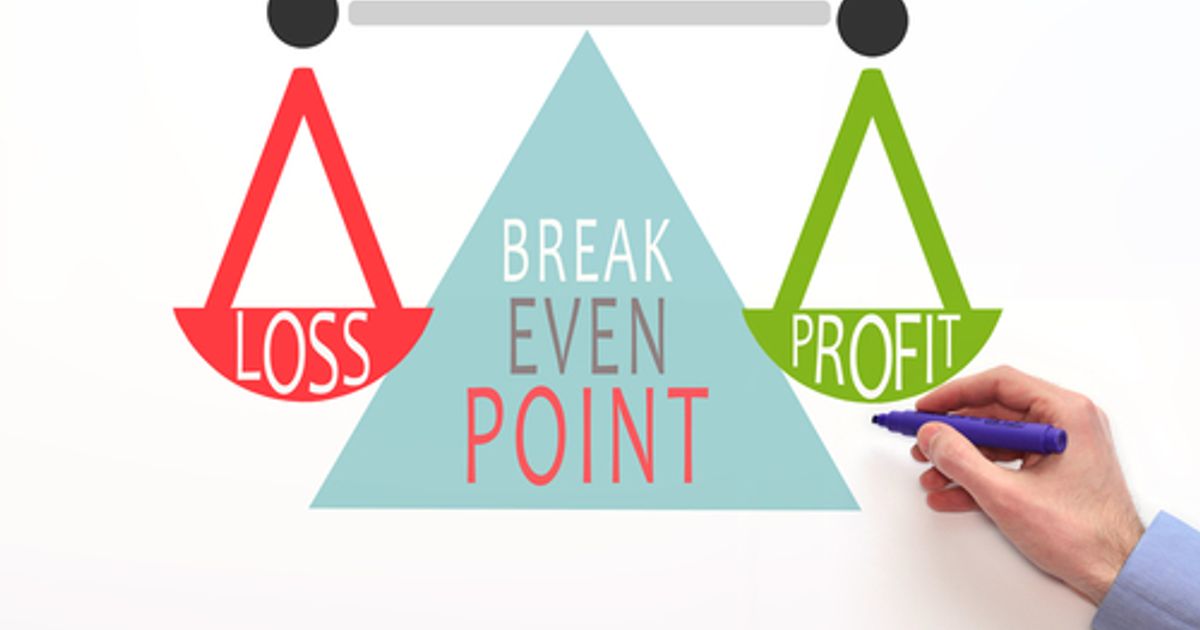Understanding The Profit A "Back End" Can Bring Your Business

This information is designed to give you insight into the importance of having a ‘back end.’
A back end refers to that part of your business that sits behind your ‘front end’! Your front end is the products or services your customers initially purchase from you. You might consider these ‘initial’ products or services the mainstay of your business.
A back end creates the opportunity for repeat sales. It means your customers can come back to you again and again.
This makes dealing with that customer far more profitable. Another great benefit is that it reduces your need to go out and win new customers constantly (far more expensive than selling to existing customers), but it does much more than that.
Here, you’ll find out more about back ends and how to build and maintain one for your business. Doing so is critical to the longevity of your business and can be requisite to achieving the highest profits possible.
A missed opportunity that could be worth thousands!
Ironically, most businesses rarely try to resell to their current or previous customers. Most never address the ‘back end’—the residual part of their businesses. However, you MUST do it constantly.
Let’s face it—identifying prospects and converting them to customers can be a costly process. Yet what do most businesses do when they’ve got new customers? They ignore them entirely and put all their marketing efforts into gaining more new customers.
That really IS a crazy approach.
Once people have bought from you (assuming, of course, your product or service delivers what you promised), they are THE most likely people to buy again. In fact, one-time customers have a propensity to buy perhaps TEN TIMES more than someone off the street.
This stands to reason. They know you, they know where you are, they trust you and, most importantly, they HAVE PROFILED THEMSELVES as being in the market for your product.
Instead of concentrating only on front end sales, you’ll generate vastly more business and profits when you devote part of your marketing to up-selling, reselling, and cross- selling to existing customers. That is, working the back end.
In its simplest form, ‘back ending’ is learning to leverage second and subsequent sales from the first sale. For example, writing to existing customers to invite them back to your business or advising them of new products or services and having them purchase from you again.
For example...
- If you are an optometrist, your back end could be an automatic contact lens re-ordering system where the patients contact lens and supplies are automatically sent out at regular intrevals.
- If you are a dentist, your back end could be teeth whitening to help improve the patients smile.
- If you are a doctor, your back could be follow up appointments to pro-actively manage as range of other health issues based on the patients age group.
- If you are an physiotherapist, it might be pre-booking a series of "tune ups"to help maintain your patients health,
- If you are a personal trainer, it might be offering your clients an invitation to join a classes that addresses one of their key challenges.
- If you sell carpets, your back-end products could include not just MORE carpet, but carpet sweepers, vacuum cleaners, protective sprays, and carpet cleaning services.
- If you sell computers, your back end can be computer courses, custom software, and computer supplies.
- If you sell industrial equipment, your back end can be maintenance contracts, supplies, and troubleshooting services.
Regardless of how, the back end is all-important!
And that’s because the profit you generate from working the back end can bring you many times the profit you make just from the initial sale.
That’s why it’s important to identify a back end for your business. If you’re basically a one-product or one-service company, seek out other products, companies, or services to offer your customers as your back end.
Be open-minded about other products, services, and companies that might fit well based on either demographics or specific areas of interest.
How profitable are you really?
 Until and unless you can identify how much back-end business you can expect, you won’t know how profitable or unprofitable an ad, sale,
customer, or promotion really is. For example, if you spend $10,000 a month in newspaper ads and they produce $9,000 in retail sales, it
looks like you’re losing $1,000 or more (not including the cost of the product sold or services furnished). But are you really losing in
the long run?
Until and unless you can identify how much back-end business you can expect, you won’t know how profitable or unprofitable an ad, sale,
customer, or promotion really is. For example, if you spend $10,000 a month in newspaper ads and they produce $9,000 in retail sales, it
looks like you’re losing $1,000 or more (not including the cost of the product sold or services furnished). But are you really losing in
the long run?
Not if you induce those new customers to purchase a similar product or service from you within 45 days. In that instance, you double the value of the customer. All of a sudden, you’re farther into profit than loss.
If you induce them to come back once every 3 months and repeat the average transaction, you’ve set up an annuity. All from an original $1,000 loss that you subsidised. But in 3 months or less, the back-end business should offset your subsidy several times over.
The same dynamics apply to salespeople and sales.
If a salesperson costs you $2,000 a month in base salary and only sells $2,000 in new business each month, it seems as if that salesperson should be fired for nonperformance.
Yet if the new customers do repeat business or if you develop a back end that converts normally one-shot sales into repeat customers, you accrue fabulous future income even if your salesperson loses you money at the outset.
If you bring in 20 customers every month who initially spend $100 and you can encourage them to invest $100 every 3 months, soon you’ll have 600 people investing $100 every three months. That’s $60,000!
2 key ways to get in and harvest!
Imperative to back-end dynamics is harvesting the ‘residual value’ of a customer. This takes a lot of thought, experimentation, and carefully documented analysis.
To really work your back end, look for logical product or service extensions to offer your customers. Work with salespeople to develop an ongoing service with so much added value that it ‘locks your clients into’ an ongoing purchasing program. Experiment with capturing their names and telephone numbers. Mail them a specific offer or make a specific offer by phone and then measure the response.
Religiously work the back end over and over again. If that sounds too calculating, look at it from another perspective. If your product or service is outstanding, then by failing to go back to your clients, at best you’re denying them the benefit of your services. At worst, you’re putting them at the mercy of competitors you know to be less than desirable.
There are literally hundreds of ways to work your back end, let’s look at 2 key methods.
1. Front end / Breakeven
This concept is a powerful extension of working the back end. The logic is this: You should be willing to break even on an initial promotion—or even lose a little—if you know you’ll make money on the back end.
A classic example is a newsletter. Few people who set out to promote a newsletter realise that publishing a newsletter is a very hard way to make money—on the front end, that is.

By the time you figure in your cost to acquire a subscriber (which may be more than the total subscription fee) and production and shipping costs, you’re lucky if you break even. However, by judiciously working the back end, you can turn that breakeven into a very viable ongoing business.
What IS at the back end? Clearly, subscribers to your newsletter have ‘profiled’ themselves in a certain way. Once they trust you, they will not only be responsive to further offers, they will also WELCOME having you select and offer ancillary products and services.
The simplest way to promote these ancillary services, for example, is to include a flyer with each issue of the newsletter offering a series of products to your subscribers. Of course, not all subscribers will buy, but if you choose the products well, you will get 10 to 20 times the response you’d get with a cold mailing— especially when you endorse the products.
2. Lock in sales in advance
This concept is extraordinarily simple, yet it results in nothing less than a guaranteed future cash flow.
The concept can be applied to any business that offers a continuing service (maintenance, cleaning, etc.) or a continuity-type product such as a newsletter.
The way it works is this: You get the customer started by offering the first instalment free, or at very low cost, with the understanding in advance that if they like the product or service, the customer will continue at an agreed-upon price for a year or, even better, forever!
For a carpet cleaning service, you could offer new customers a free cleaning of one room, provided the customer agrees in advance that should they be happy with the work, they will sign up for regular cleaning 4 times a year that will be automatically billed to their credit card. This is called an ‘Until Further Notice Arrangement.’ You keep on billing until the customer cancels.
Do you see what this accomplishes? Instead of waiting for customers to call when they need carpet cleaning, the company is now guaranteed that the customer will pay for a cleaning 4 times a year. All the company has to do is call the customer each season to schedule the cleaning and then write up the charge slip.
Naturally, the company will lose money giving out free cleanings on the front end. But the loss will be more than compensated by the back-end profit made from the 4- times-a-year cleaning—especially since the marketing cost for the future cleanings are zero.
An example shows that a back end means millions for some... what could it do for you?
To truly grasp the power of a back end and the profit it could generate for you, let’s review a case study.

A business created an offer to sell a collection of rare coins to new customers for just $19. In doing so, the business owner actually lost a few dollars up front on every sale. However, 50,000 collections were sold. Thanks to their back end, ‘up front’ is the key word here. Of the 50,000 people who bought a coin set at $19, nearly 10,000 came back and bought $1,000 or more on the back end, that is, through follow-up sales. This business owner, then, despite having lost a few dollars up front, eventually made $2,000,000 on the back end!
However, that was just the FIRST step in the back end.
Once every 3 months, this business owner went back to the original 50,000 people who bought the $19 coin sets and, of them, at least 250 people chose to buy at least $1,000 more in coins. That translates into $50,000 in back-end profits EVERY 3 months, above and beyond the $2,000,000 generated in the first back-end sales.
Then the business owner decided to go back to the 10,000 people who bought something for $1,000. About 1,500 of them elected to buy more within the first 9 months. The average additional order was $5,000, which made this business owner another $1,500,000. Those 1,500 customers kept ordering an average of one-and-a- half times a year. That meant an additional $1,500,000 in business every year comes from the back end.
So you can see the drastic change in profits this business was able to achieve by creating and then focusing on the back end.
The back end is absolutely vital to any business.
Look at the above illustration once again. If the business owner had only made that first $19 sale and had not cultivated the back end, he would have missed out on many, many millions of dollars in business and actually lost money on the customer.
If you're an ambitious business owner looking to boost your current results or if you're looking to get your business off to a flying start we invite you to contact us today. You can expect practical business, tax, marketing and financial advice that could have a profound effect on your future business profits. To book your FREE, one hour introductory consultation simply call us on (03) 9326 1244 or complete your details in the box at the top of this page and we will be in touch.














